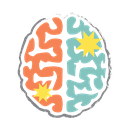

An excellent daily activity that helps to jumpstart critical thinking skills as participants engage in trying to decipher the answer to various word puzzles.
Materials
- Optional: Whiteboard and marker or blackboard and chalk
Framing
The Wuzzles feature word puzzles that visually depict words, phrases, names, places, sayings, etc. through creative positioning, words combinations, repetition, figures, or symbols. This type of word puzzle is called a “rebus” and it dates back to more than 2000 years during the Persian empire. In order to solve the puzzle, participants will need to pay attention to the missing concept, usually a word that is in, on, over, under, before, after, or between another word. The wuzzles themselves range in difficulty but the difficulty in solving them also lies within your group’s innate ability to solve them. The goal isn’t to be able to solve them however, but to pay attention to and use all the information presented to you in order to come up with the best solution.
Instructions
- Select one wuzzle, either purposefully or randomly, and show to your group. It may be a good idea to rewrite the wuzzle larger on a whiteboard or blackboard.
- Give your group 5 minutes to figure out the solution silently and independently.
- Then, encourage them to discuss with their peers the solution to the wuzzle for another 5 minutes.
- After the 10 minutes of solving, ask the group if anyone has an answer. Whether or not the wuzzle has been correctly solved, tell or show them the solution.
- Typically, as soon as they see the answer they will get it immediately and think, “Oh my goodness, why didn’t I figure it out?”
Modify
- Alternatively, instead of just “giving” them the answer, consider giving hints or asking questions to help lead them in the correct direction.
- If your group is older or more skilled, don’t be afraid to present to them wuzzles with lesser known words or phrases. See if they can use everything they’ve learned about word associations and visual representations in order to solve the wuzzle. Then, take the opportunity to explore the word or phrase’s meaning.
- Use your creativity and develop your own wuzzles.
Safety
- It may be a good idea, at least the first several times you do this activity with your group, to be selectively with the wuzzles you choose, in order to best suit their literacy level. Aim for wuzzles where the words and phrases are easily known by your group.
Wrap-up
- Spend another few minutes exploring the strategies the group used in order to solve the wuzzle and maybe some of the things they did not pay attention to if they failed to solve it.
- Furthermore, explore the definition of that solved word or phrase and see if anyone can use it in an example.
Adapted from: http://images.pcmac.org/SiSFiles/Schools/TN/HamiltonCounty/OoltewahMiddle/Uploads/Forms/answers_to_cafe_convo_Wuzzle_cards.pdf